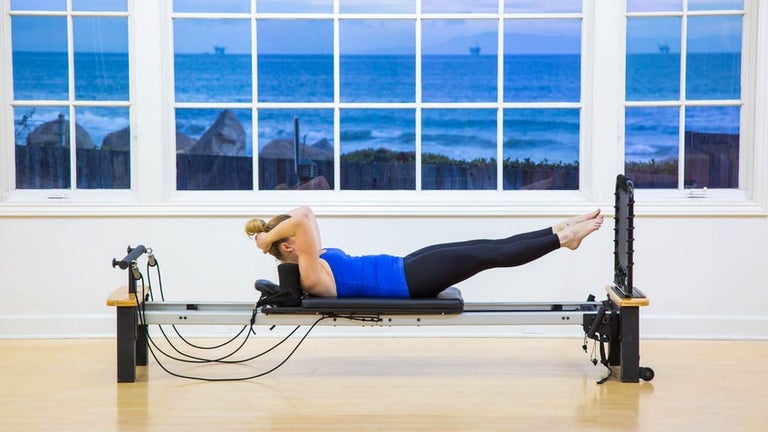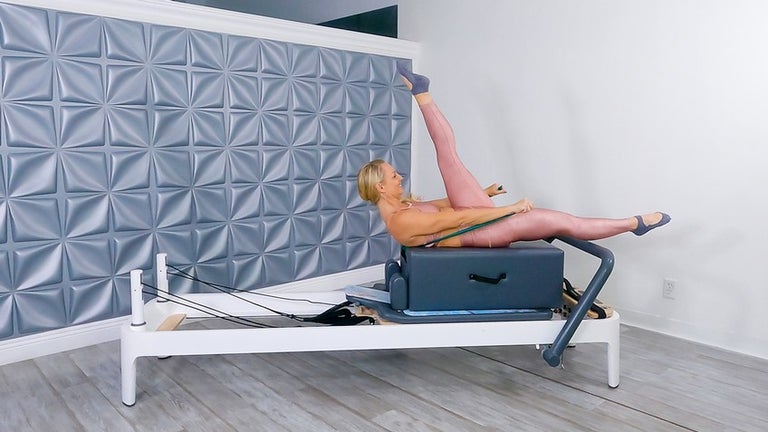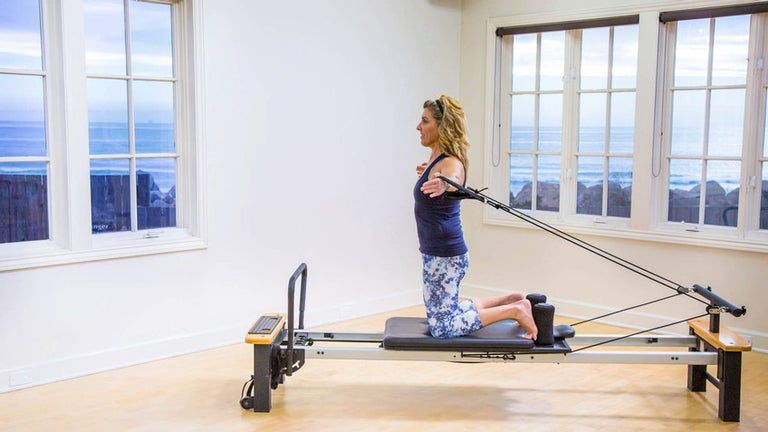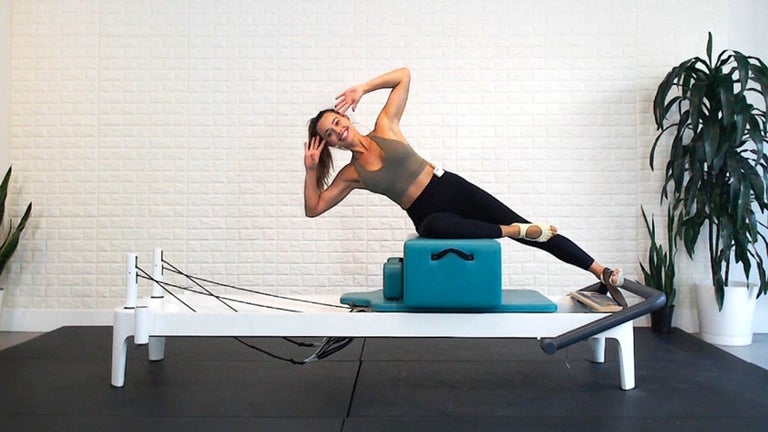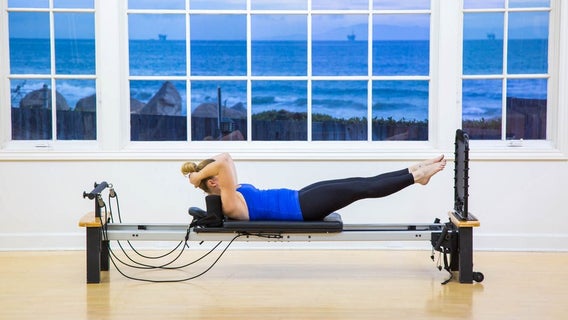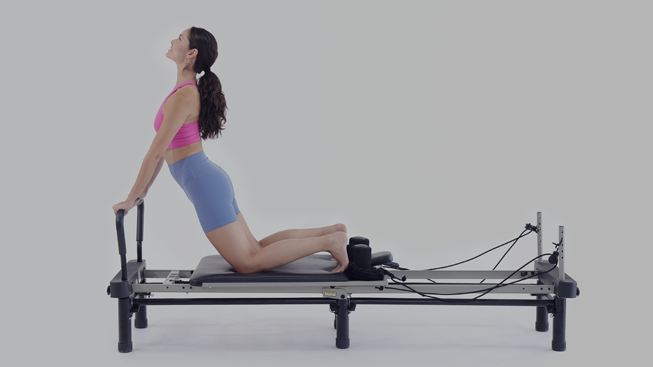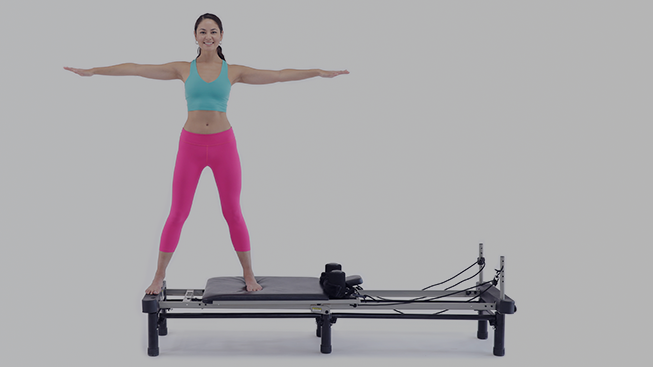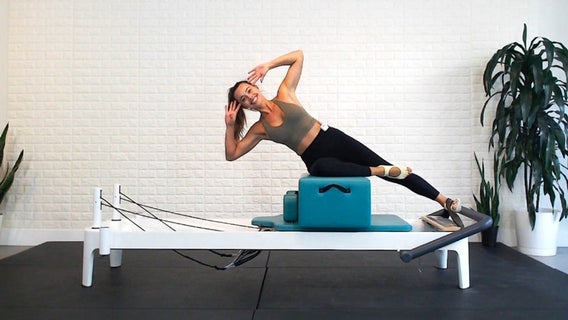At-Home Reformer Pilates
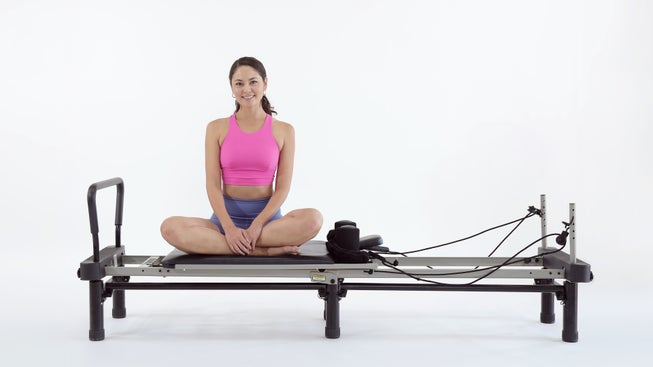
Benefits of At-Home Reformer Pilates
Have you been thinking about buying a Reformer for your Pilates workouts at home? When studios closed during the pandemic, people began purchasing at-home Pilates Reformers, also known as “Pilates machines”, more than ever before. After making the initial investment of $500 to over $5000 depending on model and brand, owning a Reformer is convenient, as it saves you time commuting to and from a studio, allowing you to workout whenever you want in the comfort of your own home.
How to Set Up Your Space
While the Reformer is a brilliant apparatus, it is a large piece of Pilates equipment both in size dimensions and weight. To move safely and effectively in your Pilates workouts, you will need several feet of clearance on all sides of your Reformer. It is also important to consider how much additional space you have to store the optional Reformer Box, as well as other small accessories, such as pads, poles, and extension straps.
Finally, if you are planning to workout with a Pilates instructor over Zoom or stream an online class, you will need space to set up your screen in the right place. Keep in mind that Pilates Reformer exercises are performed in a range of positions. Whether you are seated, lying down, standing, or kneeling, you should create a space where you can look back at your screen anytime as you would a teacher in a studio class.
Tips and Precautions
Pilates Reformers are big, heavy pieces of equipment with many moving parts. Before you use it, make sure to review the safety precautions provided by the manufacturer. While these instructions will vary by make and model, we recommend the following tips:
Step onto a stable platform: Before you step or sit on the Reformer, check that at least one or two resistance springs are connected to ensure that the carriage will not slide out from under you. Whenever possible, step on a stable surface first.
Release springs with care: Only attempt to remove springs when they are not stretched. Not only is it dangerous to release a fully or partially loaded spring, but it also takes more effort.
Dress appropriately: Avoid dangling jewelry, scarves, or loose clothing that can become tangled in the springs. Wear bare feet or grip socks so your feet don’t slip.
Don’t Slip and Slide: If you tend to get sweaty during your workouts, make sure to have a towel nearby to wipe down your equipment.
Keep it Simple: If you are working out at home, avoid advanced Reformer exercises that are best attempted with a spotter. The splits, headstands, and backbends are some examples of exercises best done in a studio with a skilled instructor offering guidance and assistance if necessary.
Featured At-Home Reformer Classes
1,000+ Reformer Pilates classes to begin and grow your home Pilates practice.
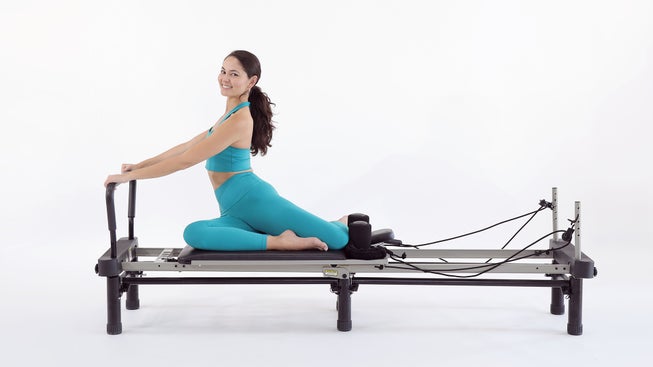
At-Home Reformer Exercises
You can do most, if not all, Reformer exercises you would perform in a Pilates studio on a home Reformer. If you are a Beginner, you will likely start with the Footwork, then the Hundred, Leg Circles, Frog, and continue with Stomach Massage, Knee Stretch, Running, and Pelvic Lift, at a minimum. If you have a Reformer Box, you will add the Long Box and Short Box series. You can even add jumping at the beginning, middle, or end of your Reformer workout with a Jump Board for an extra cardio burn.
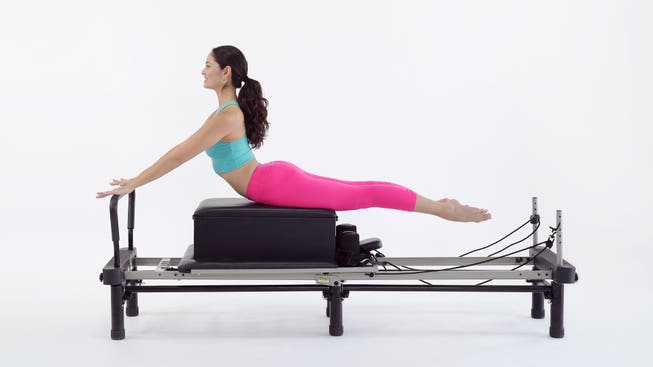
While at-home repertoire may not be different from a studio’s, there may be omissions or modifications that make sense for someone practicing on a home Reformer. You may want to begin with simple and safe exercises that are appropriate for all levels. Once you have mastered those, then you can subsequently add one-legged Footwork variations or add another set of the classic series. To be on the safe side, you may want to hold off on performing certain advanced exercises, such as those requiring a great deal of balance, control, and coordination. Regardless of skill level, you will definitely get a great, full-body workout on your Reformer.
Pilates Reformer Exercises
Down Stretch
Down Stretch
This exercise strengthens the back extensors and shoulders.
Side Splits
Side Splits
This exercise challenges your balance, stability and works the inner and outer thigh muscles.
Frequently Asked Questions
Which Pilates Reformer is best for at-home workouts?
Your ideal Reformer model depends on your budget, space, and personal Pilates practice. If you are just starting out, you may want to choose an entry-level Reformer for home use such as those sold at big box stores. A used Reformer can be another good choice. If you are a Pilates instructor or experienced practitioner, a studio-style Reformer makes sense in the long-term. Studio Reformers tend to be larger in size, weigh more, and pricier than those made specifically for home use. At-home Reformer models are typically easier to move and store, but they do not provide the same distinctive feel as a studio Reformer.
Can I start Reformer Pilates without a teacher?
Yes! During the COVID-19 pandemic, many people began their Reformer practice at home when studios around the world suspended in-person classes. In Joseph Pilates’ original studio in New York City, students worked out autonomously. As they performed their prescribed exercises, either Mr. Pilates or another instructor would give the occasional suggestion or hands on nudge. While it is great to have autonomy over your equipment and workout, Pilates is traditionally taught in the studio setting, where an experienced instructor can observe your body on the equipment and in space. If you begin a home Reformer practice, consider adding instructor-guided sessions, either in-person or online, so you can progress your practice as Mr. Pilates intended.
Do you need a Reformer to practice Pilates at home?
Not at all! In his book Return to Life, Mr. Pilates left us a series of 34 highly effective Mat exercises, which have spawned countless variations over time. With a supportive, soft Mat and a variety small props, you can still get an amazing workout. Many of the Mat and Reformer exercises share a vocabulary of shapes as well. If you start your Pilates practice on a Mat, when you finally experience the Reformer, you will get more out of each exercise due to your foundational understanding of the Pilates Method.
How do I know what level I’m at?
When you first start practicing at home, we recommend sticking to the beginner-level exercises. In general, these are exercises that are two-limbed, require no twisting, and limit spinal extension. These “simple” exercises can be plenty challenging. In fact, even experienced practitioners begin their Reformer workouts with the same Footwork that beginners do! It is important to remember that unlike other fitness methods or sports, we do not practice Pilates to be “good” at Pilates, but rather to make daily activities and tasks more enjoyable and painless. As long as you focus on your journey and quality of movement, you will begin to see and experience a positive change.
Your Pilates Anytime Membership Benefits
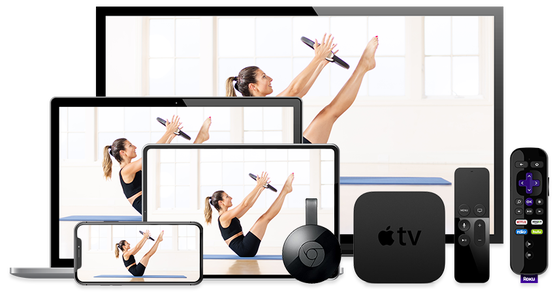
- 15-Day Free Trial
- Unlimited Access to Thousands of Classes
- 95+ Pilates Programs and Challenges
- No Ads
- New Videos Weekly
- Available on All Your Favorite Devices
